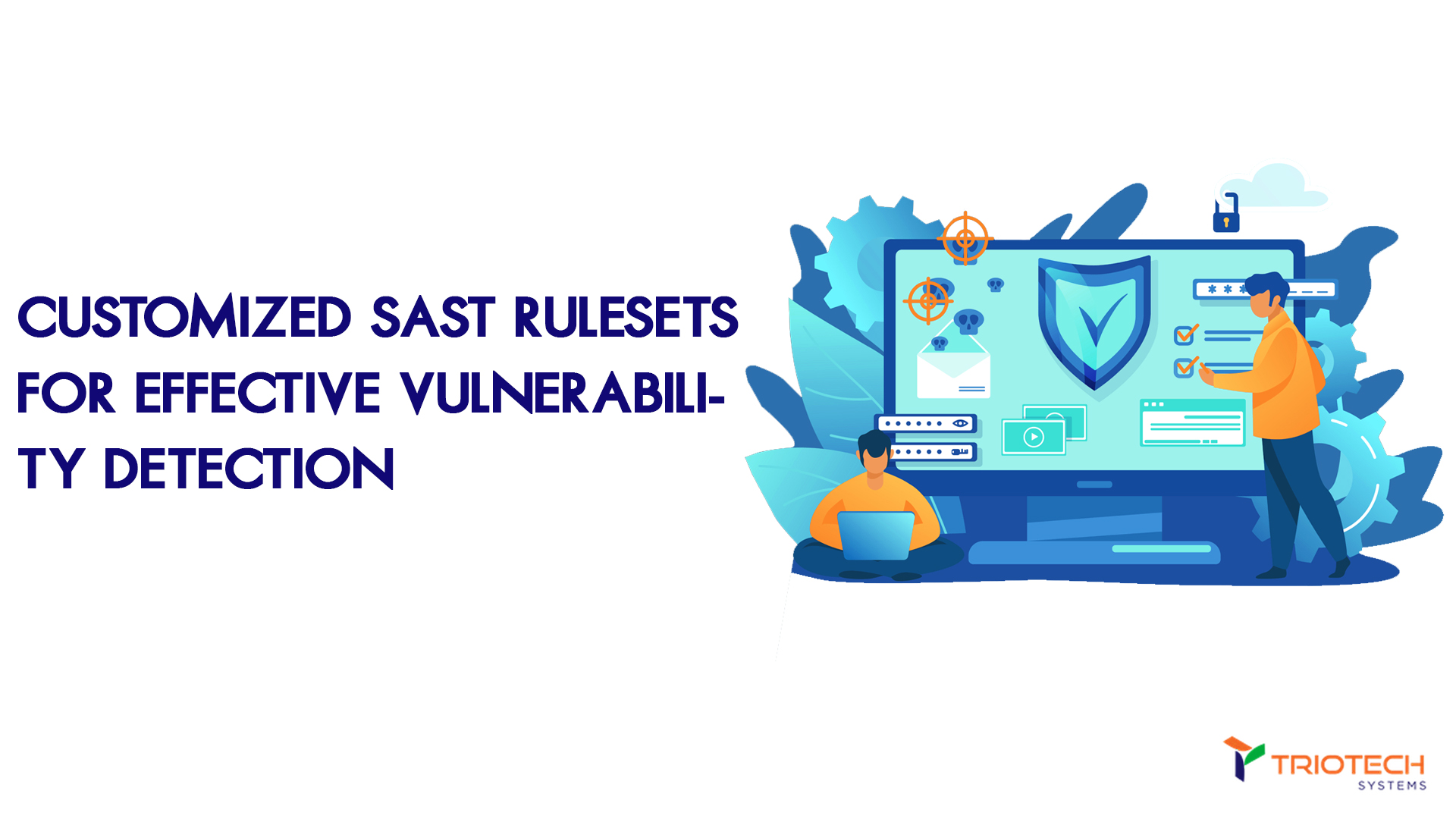When it comes to identifying vulnerabilities in application code, customized rulesets for SAST (Static Application Security Testing) tools are indispensable. By tailoring the detection rules to fit your organization’s specific needs, you can drastically improve the precision and relevance of your scan results.
This blog by TRIOTECH SYSTEMS explores how customized rulesets enhance SAST capabilities and provides practical tips for creating effective rules tailored to your environment.
What Are Customized SAST Rulesets and Why Do They Matter?
Off-the-shelf SAST tools come with generic rules designed to detect common security flaws like SQL Injection or XSS. While useful, these rules may not align with your unique codebase, development practices, or compliance requirements.
Key Benefits of Tailored Rulesets for SAST Tools
- Improved Accuracy: Reduce false positives and focus on genuine vulnerabilities.
- Alignment with Coding Standards: Address specific patterns or guidelines used by your team.
- Enhanced Compliance: Meet industry-specific regulations like PCI DSS, HIPAA, or GDPR.
Custom rulesets bridge the gap between generic tools and your organization’s precise security needs.
Step-by-Step Guide to Creating Customized SAST Rulesets
Step 1: Understand Your Codebase and Risk Areas
Start by understanding your application’s architecture and common vulnerabilities. Consider:
- The programming languages and frameworks used.
- Industry-specific threats (e.g., API security for fintech).
Step 2: Leverage Built-In Rule Editors for Precision
Most SAST tools, such as SonarQube, Checkmarx, or Veracode, provide built-in editors for crafting custom rules.
- Define specific coding patterns to be flagged as vulnerabilities.
- Exclude irrelevant patterns to minimize false positives.
- Test new rules in a controlled environment before deployment.
Step 3: Align Rules with Compliance Standards
To enhance compliance efforts, customize rules to detect violations of OWASP Top 10, PCI DSS, or other relevant frameworks.
Step 4: Automate and Maintain Your Rulesets
As your code evolves, so should your SAST rulesets. Implement processes to:
- Review and update rules periodically.
- Automate the integration of updated rule libraries into your CI/CD pipeline.
Overcoming Challenges in Crafting Custom SAST Rules
While the benefits are significant, crafting effective rulesets requires:
- Expertise in Secure Coding: Your team needs deep knowledge of vulnerabilities and coding practices.
- Tool-Specific Skills: Familiarity with the SAST tool’s rule-building interface is essential.
- Ongoing Maintenance: Rules must evolve with the codebase and threat landscape.
Conclusion: Enhance Application Security with Custom SAST Rules
Customized SAST rulesets empower your organization to detect vulnerabilities with precision, meet compliance requirements, and streamline remediation efforts. However, developing and maintaining these rules demands expertise and dedicated resources.
At TRIOTECH SYSTEMS, we specialize in tailoring SAST tools to your organization’s unique needs. From implementing customized SAST to integrating them into your workflows, we ensure your application security efforts are robust and efficient.
Take Action Today: Contact TRIOTECH SYSTEMS!
Read Also:
How to Tune and Configure SAST for Optimal Results?
How to Prioritize the Vulnerabilities Found in SAST/DAST Scans?




